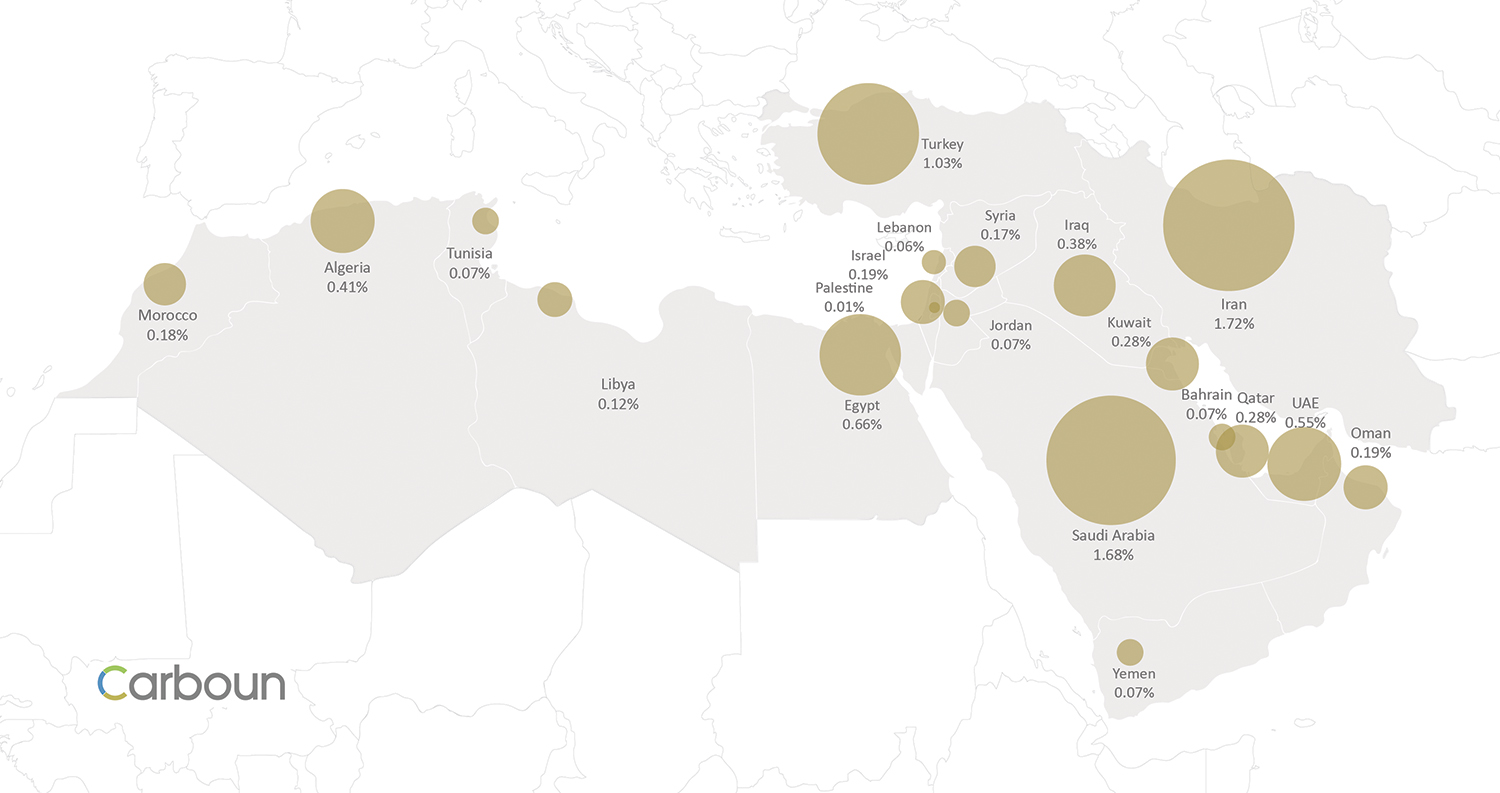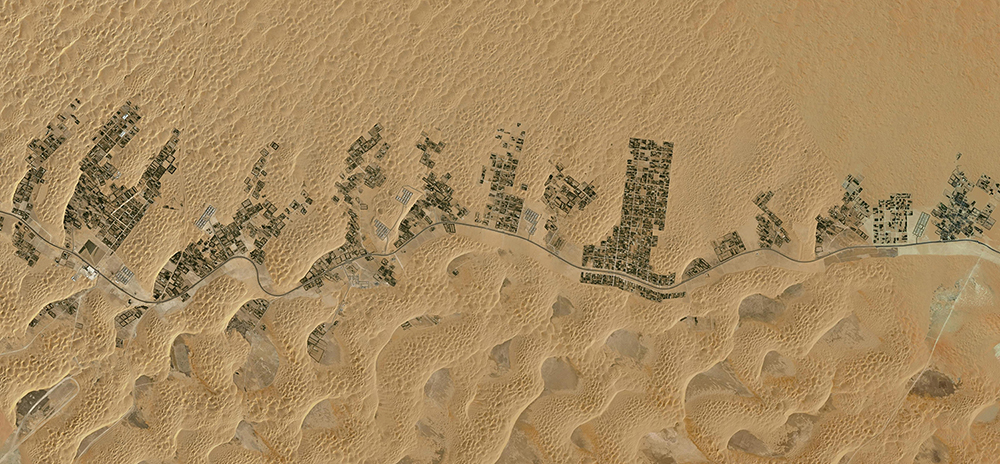|
|

In Pursuit of Sustainable Energy Sources : Challenges and Solutions
Karim Elgendy, Founder and Coordinator of Carboun, was recently commissioned by Frederich Ebert Foundation (Frederich Ebert Stiftung) to produce a set of visual guides to renewable energy in the Arab World to coincide with the 23rd Conference of Parties (COP23). The infographic below is the third of three visual guides. It represents an analysis of the challenges facing renewable energy growth in the Arab World. The three guides, which were researched and designed by Karim Elgendy for the Frederich Ebert Foundation, were based on raw data provided by International Renewable Energy Agency (IRENA), Regional Center for Renewable energy and Energy Efficiency (RCREEE), Lazard, World Energy Council, and Bloomberg. Copyrights for this infographic are reserved for the Frederich Ebert Foundation and the author. No reproduction or republishing of any infographic or part thereof without prior written consent from Frederich Ebert Foundation and the author. Guide 1 covers the state of the region and Guide 2 covers Regional Aspirations. They can also be reached via the infographics page.
Continue reading In Pursuit of Sustainable Energy Sources : Challenges and Solutions

In Pursuit of Sustainable Energy Sources : Regional Aspirations
Karim Elgendy, Founder and Coordinator of Carboun, was recently commissioned by Frederich Ebert Foundation (Frederich Ebert Stiftung) to produce a set of visual guides to renewable energy in the Arab World to coincide with the 23rd Conference of Parties (COP23). The infographic below is the second of three visual guides. It represents a review of plans and aspirations to grow renewable energy capacities in the Arab World and the scale of planned increase in renewable energy capacity. The three guides, which were researched and designed by Karim Elgendy for the Frederich Ebert Foundation, were based on raw data provided by International Renewable Energy Agency (IRENA), Regional Center for Renewable energy and Energy Efficiency (RCREEE), Lazard, World Energy Council, and Bloomberg. Copyrights for this infographic are reserved for the Frederich Ebert Foundation and the author. No reproduction or republishing of any infographic or part thereof without prior written consent from Frederich Ebert Foundation and the author. Guide 1 covers the state of the region and Guide 3 covers Challenges and Solutions. They can also be reached via the infographics page.
Continue reading In Pursuit of Sustainable Energy Sources : Regional Aspirations

In Pursuit of Sustainable Energy Sources : The State of the Region
Karim Elgendy, Founder and Coordinator of Carboun, was recently commissioned by Frederich Ebert Foundation (Frederich Ebert Stiftung) to produce a set of visual guides to renewable energy in the Arab World to coincide with the 23rd Conference of Parties (COP23). The infographic below is the first of three visual guides. It represents an analysis of the state of renewable energy in the Arab World region in its regional context. The three guides, which were researched and designed by Karim Elgendy for the Frederich Ebert Foundation, were based on raw data provided by International Renewable Energy Agency (IRENA), Regional Center for Renewable energy and Energy Efficiency (RCREEE), Lazard, World Energy Council, and Bloomberg. Copyrights for this infographic are reserved for the Frederich Ebert Foundation and the author. No reproduction or republishing of any infographic or part thereof without prior written consent from Frederich Ebert Foundation and the author. Guide 2 covers Regional Aspirations and Guide 3 covers Challenges and Solutions. They can also be reached via the infographics page.
Continue reading In Pursuit of Sustainable Energy Sources : The State of the Region
 National share of 2014 global carbon emissions across the Middle East and North Africa region, including Turkey, Iran, and Israel. Copyrights: Carboun Karim Elgendy
The two-week COP 21 climate conference in paris (also known as the 21st Conference of Parties to the United National Framework Convention for Climate Change ) ended on Saturday 12 December with an adopted agreement covering 195 countries, and providing a framework for voluntary efforts to significantly reduce carbon emissions starting 2020.
Continue reading From Paris to Marrakech and Beyond
Karim Elgendy
 Liwa date farms benefit from some of the freshest ground water in the UAE. Copyrights: Google Those who visit the Middle East and North Africa from more temperate climates are often struck with how hot and dry the region is, and how scarce its rainfall. Some wonder why cities became established here, and how they continue to exist despite the lack of renewable freshwater.
These concerns are not entirely groundless. Yet these cities’ existence is not in any way miraculous: it’s merely an example of what can happen if cities fail to strike a sustainable balance between growth and limited resources.
Continue reading How Sustainable is Your Oasis?: A Review of Water Resources in Middle East Cities

Guy El Khoury
Despite the increasing global interest in renewable energy sources, electricity generation remains largely dependent on fossil fuels with approximately 70% of the world’s electricity currently being generated using coal, natural gas, and petroleum products. Coal, the most carbon intensive of the fossil fuels, accounts for the largest share of electricity generated globally, with 40% of all electricity generated.
Such reliance on fossil fuels is coupled with a relatively low conversion efficiency from fossil fuels to electricity, which averages 35%. The remaining 65% of the energy contained in fuels used is in effect wasted, lost as heat in power plant turbines and generators.
In this context, it is not surprising to learn that electricity generation stands as the top contributor to global Carbon emissions. According to the International Energy Agency (IEA), electricity generation currently accounts for approximately 50% of global carbon emissions.
In the Middle East and North Africa region, electricity and heat production are responsible for 41% of total carbon emissions according to IEA data from 2009. And while not representing a consumption sector, electricity generation ranked well higher than any individual sector, including transportation, which comes second and accounts for 25% of the region’s total carbon emissions. Yet carbon emissions from electricity generation is not equal across the region. In fact, the top 5 contributors to carbon emissions from electricity generation – namely Saudi Arabia, Egypt, the UAE, Kuwait, and Iraq – together represent 70% of the region’s electricity generation carbon emissions, according to 2009 data by the IEA, a share that represents approximately 30% of the region’s total carbon emissions.
Continue reading Carbon Footprint of Electricity in the Middle East
Karim Elgendy
Energy use in buildings accounts globally for nearly 40% of global energy consumption and 36% of total energy-related carbon dioxide emissions. These percentages are almost equally split in two halves between the industrialized countries and the rest of the world (Price et al., 2005).
Our buildings use energy in two ways; first, to keep our interior environment comfortable through cooling, ventilation, and heating our spaces; second, to power the appliances that we have come to depend on such as home appliances, lighting systems,computers, and other office equipments. To reduce this high percentage of energy use and the resultant carbon dioxide emissions, both sources of energy use in buildings must be addressed. The first energy use can be addressed by improving the building envelope’s efficiency in order to reduce the need to condition its spaces (cooling, heating, and ventilating). This method of conserving energy use includes a vast array of passive low energy design strategies that depend on the building’s environment and context. The second energy use can be addressed by improving the efficiency of appliances and equipment used inside buildings including improving the efficiency of lighting and dissemination of improved stoves for cooking in rural areas. Continue reading The State of Energy Efficiency Policies in Middle East Buildings
|
|




